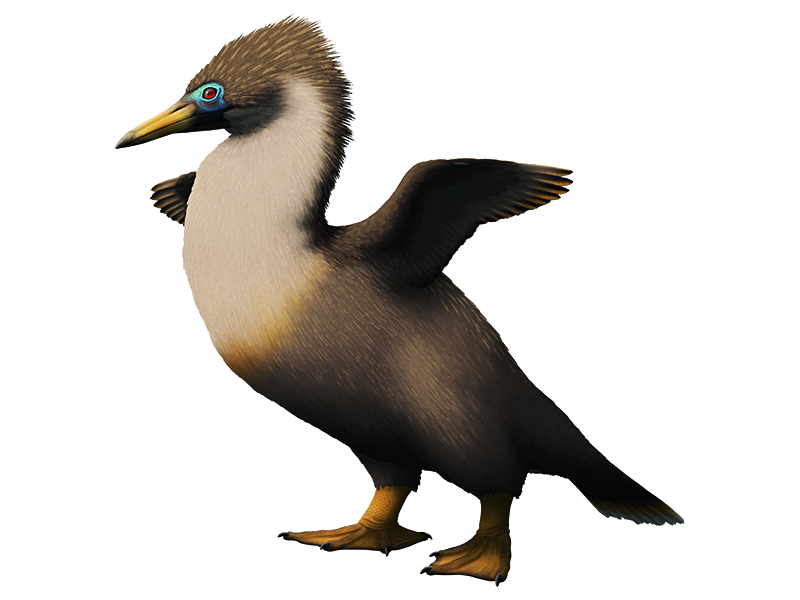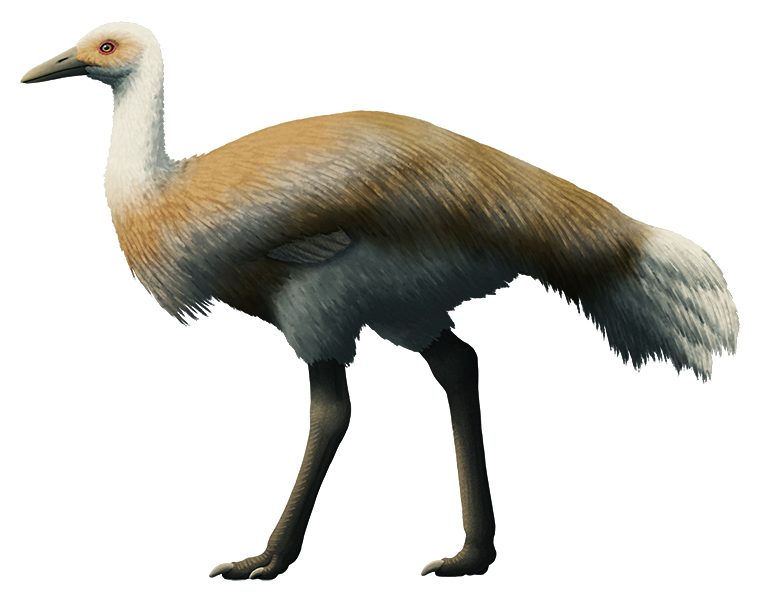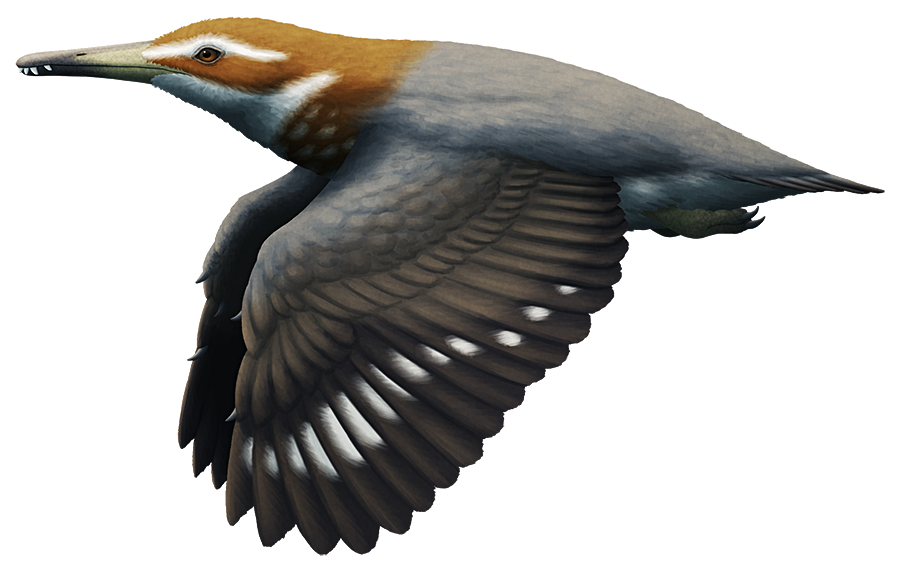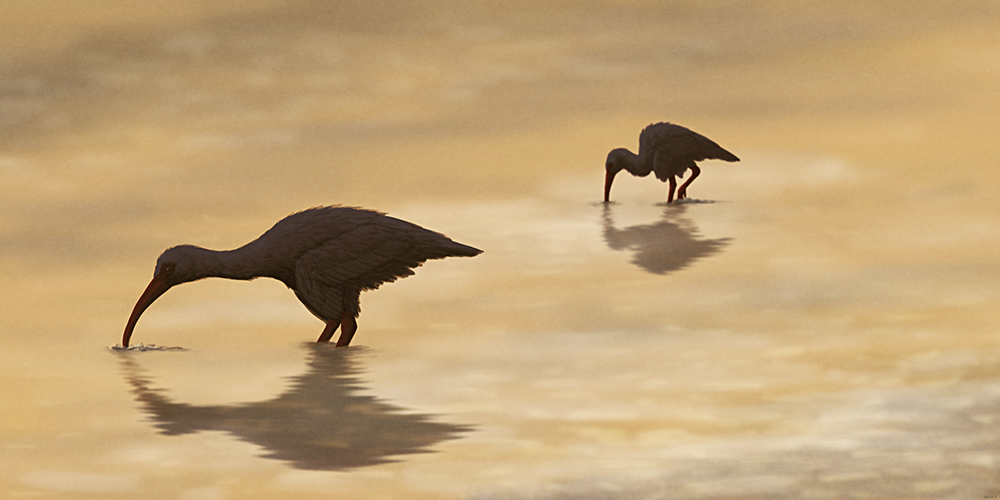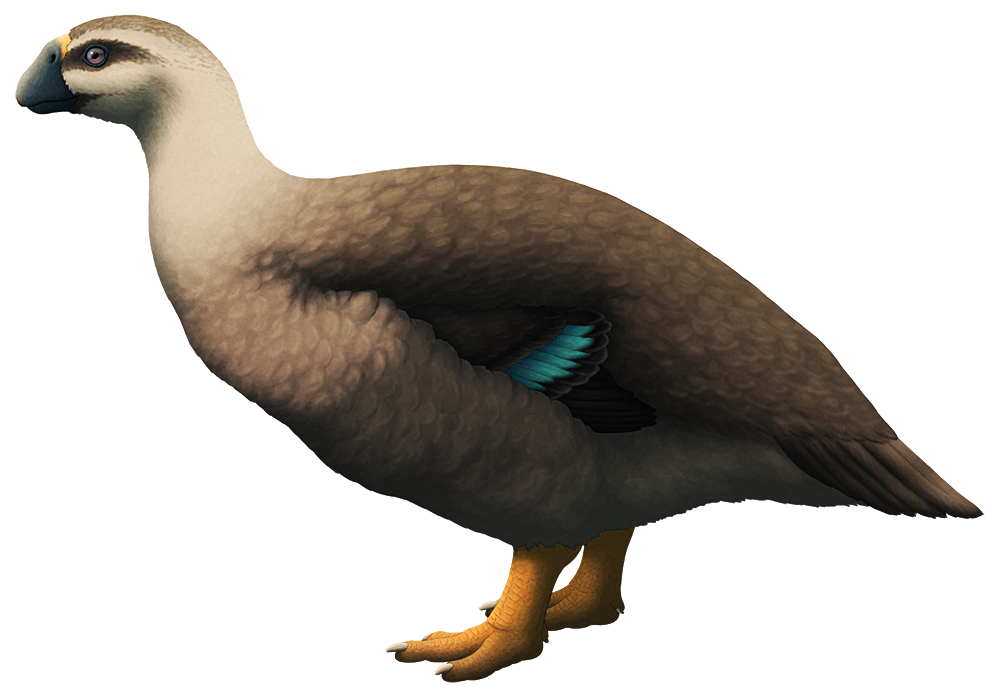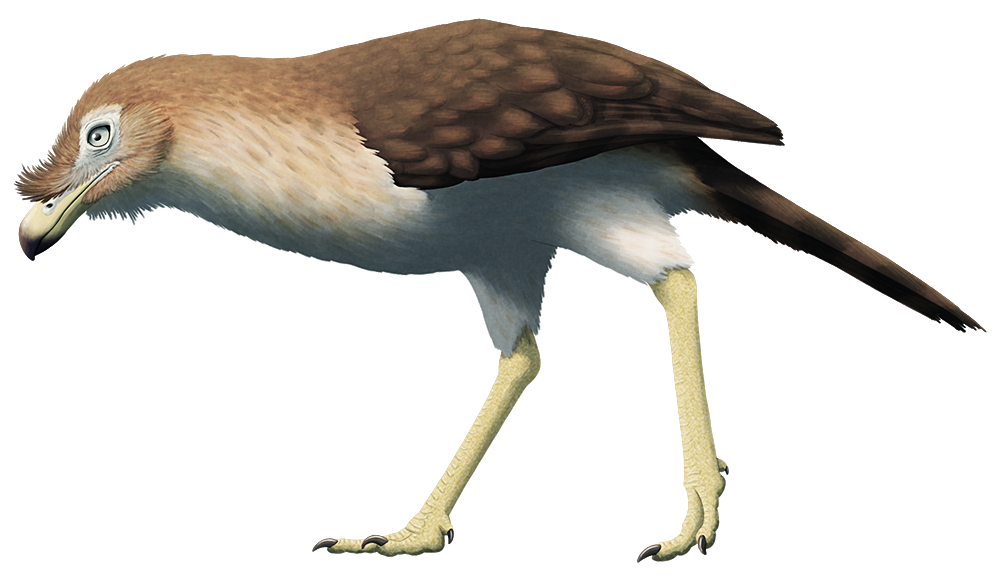Copepteryx hexeris, a plotopterid bird from the Late Oligocene of Japan (~28-23 mya).
Known from around the North Pacific rim from about 33-15 million years ago, plotopterids were flightless diving birds which used their small but powerful wings to propel themselves through the water. They were convergently similar to penguins in body shape and lifestyle, but not actually closely related to them – instead being relatives of gannets, cormorants, and anhingas.
Smaller plotopterids were about the size of modern cormorants, around 70cm long (2′4″), but the larger known genera like Copepteryx rivalled the southern giant penguins at around 1.8m (6′).
And a second species of Copepteryx known only from a single leg bone (Copepteryx titan) may have been ever bigger. Estimated at over 2m in length (6′6″), it was possibly one of the largest diving birds to have ever lived.

